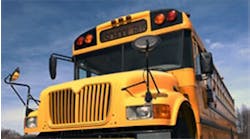The ubiquitous availability of communications devices makes it easier for education institutions to disseminate critical information to students, staff and the public, whether it’s in the normal course of business or during a crisis.
But in a crisis, a school needs to have not only the devices, but also a plan for how it will provide information and how to make sure that those who need to know get the information expeditiously.
The Washington state “School Safety Planning Manual” recommends that a school system’s emergency communications plan incorporate provisions for communicating within the district to notify, coordinate and authorize actions appropriate to the nature of the emergency.
A plan also should spell out how the school system will notify those outside the district—emergency management and response agencies, the news media, parents and the community at large—of the status of a school emergency and how the school is addressing the situation.
Experts recommend incorporating redundancy into the system; having a critical message disseminated over multiple systems will make it less likely that someone who needs to be alerted will not get the news.
Among the possible communications paths: automated telephone messages; e-mail notices; text messages to cell phones; district websites; websites of local public safety agencies; two-way radio systems, broadcast radio and television stations; electronic billboards; sirens or alarms.
Some security consultants recommend creating a so-called “dark website” that can be activated in an emergency. A dark website is created in advance but is not accessible until it is put online in a crisis. The dark site can temporarily replace a regular home page (especially if an emergency makes the website unavailable), or users can find it by following links on a home page. It enables a school system to make itself the primary source of information about an emergency and disseminate specific information that those connected with the schools are looking for.
Administrators also should make sure that the infrastructure needed for emergency communications is working properly. A checklist that was put together by the National Clearinghouse for Educational Facilities alerts education administrators of some of the issues related to emergency communications they need to address when a school is facing some kind of hazard:
•Does the school have an uninterruptible power supply to provide backup power in an emergency?
•In earthquake-prone and wind-hazard areas, are interior and exterior communication systems braced and supported adequately? If those systems are damaged, school officials after an emergency may encounter obstacles communicating to administrators, faculty, students and staff.
•In high-risk areas, is communications wiring distributed in secure chases and risers or otherwise secure areas to prevent tampering?
•Does the school have the necessary transmitters, receivers and repeaters to ensure radio communication by emergency medical services personnel everywhere in the building? In some buildings, steel components can interfere with radio communication.
•Does the school have enough handheld two-way radios or cell phone for the staff?
A school safety guide compiled by the state of Minnesota’s Homeland Security and Emergency Management division encourages schools to have two-way communications established between the main office and classrooms, school-based security staff, playground staff, portable classrooms or buildings, ball fields, health services, custodial staff, transportation dispatchers, and other student services personnel such as counselors, social workers or assistant principals.


